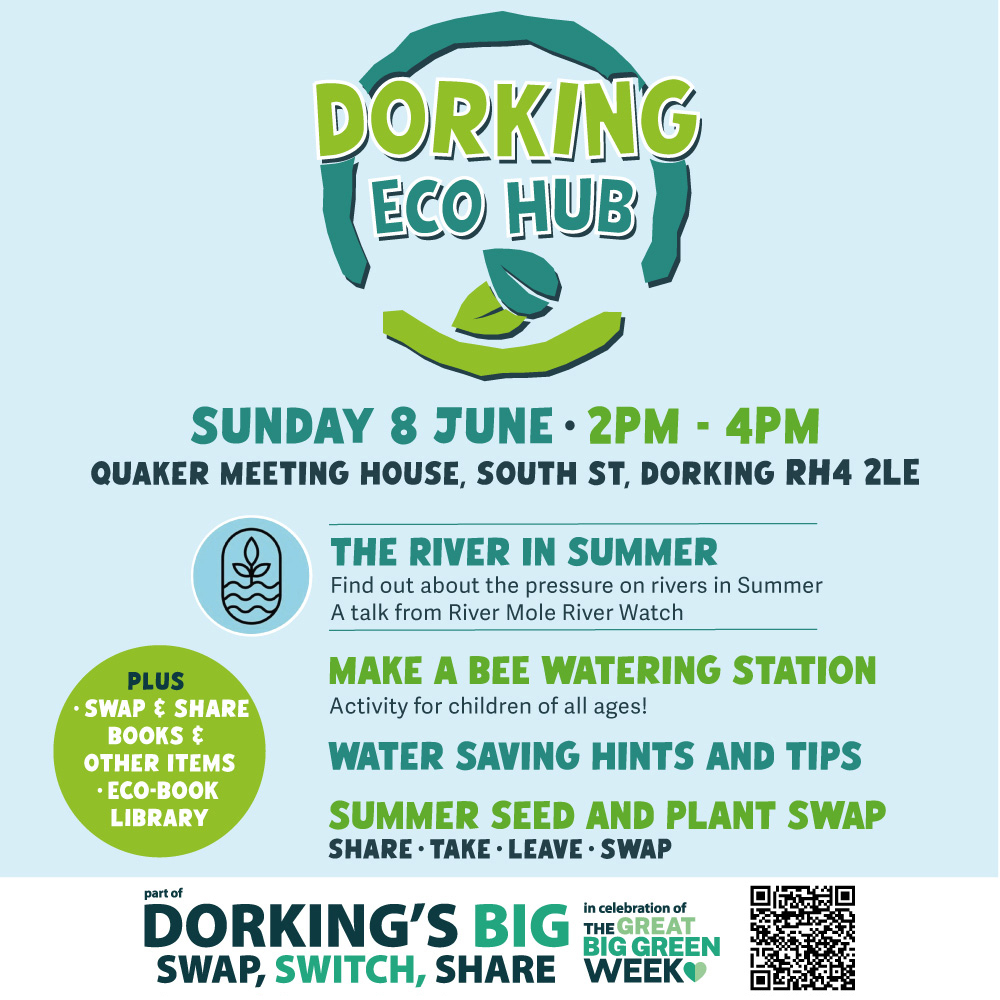The Circular Dorking Blog
Busy bees at the Meeting House
14th May 2025

The May Eco Hub saw Dorking Quaker Meeting House a-buzz with eco-friends (and Friends) of all ages.
The buzz was appropriate, given that the emphasis was on making our gardens friendly to wildlife, not least bees.
Friends had been asked to collect and donate used milk cartons. These were destined for a second life as ‘bug hotels’ and visitors to the Eco Hub were soon set to work, filling the cartons with bamboo stalks, dried leaves, moss and pinecones – anything that might provide a safe home for insects.
A wildlife hunt chalked up an impressive tally of creatures spotted in the Meeting House Garden. The most exotic, discovered with great excitement, was a leopard slug – unusual in that it is carnivorous and can move at a rate of 6in per minute, which apparently makes it a speedster in the slug world!
Guest Speaker
Each Eco Hub features a guest speaker. This month’s was Jo Rogers of The Surrey Wildlife Trust.
Jo began by explaining the Trust’s background and mission. Founded more than 60 years ago as the Surrey Naturalists’ Trust, it is the only conservation group that covers all of Surrey, which includes 62 nature reserves. Surrey is distinctive in its variety – it boasts heathlands, woodlands, wetlands, rivers, chalk grasslands, and gardens (which account for 12% of the county). The Trust’s mission, Jo told us, is to restore, connect and protect at least 30% of land and sea for nature by 2030. But despite its hard work, and that of other conservation charities across the UK over the last 100 years, nature continues to decline at an alarming rate. In Surrey alone one third of species are now lost or in decline.
What we can do
Jo shared a series of tips on how to attract wildlife to our gardens:
- Provide a water source. This will have the single biggest impact on wildlife. It should have shade, oxygenating plants, and a means for wildlife to get in and out of the water. Bird baths are important, as are ‘bee watering stations’ – ideally a shallow dish of water with pebbles that the bees can perch on as they drink
- Provide shelter. Bug hotels are ideal, but Jo cautioned against the ‘commercial’ kind which may be of little practical use. Care should be taken to provide bamboo stalks, for instance, that are wide enough for bees to access. A pile of logs – known as a ‘stumpery’ – can provide shelter for larger creatures
- Don’t mow. Leaving your lawn to its own devices – even just for ‘No Mow May’ – can be hugely beneficial to wildlife
- Plant varieties that flower all year. Pollinators are attracted to blue and purple flowers. Plant native varieties and avoid big showy plants
- Make compost. This will provide a habitat for slow worms, wood lice and worms
- Feed the birds. Provide a variety of food, particularly in winter, when wood is naturally scarce, and in spring, when the birds have babies to feed.
Suggestions from the audience included working with neighbours, building a ‘hedgehog highway’ by cutting holes in the bottom of fences, and avoiding pesticides and herbicides. There was also some discussion on how animal flea treatments have found their way into both the water system and birds’ nests, in the latter case due to animal fur being used to line nests.
Surrey Wildlife Trust has 100 paid staff but relies on its volunteers, who clocked up 28,000 hours of unpaid work in 2024. It is funded mainly through membership fees and donations.
Interested in the Trust’s work?
Thank you to author
Tara Craig
The June Eco Hub will take place on 8 June (on the second Sunday of the month, to coincide with Big Green Week, which runs from 7-15 June).
As usual, it will be held at the Meeting House between 2 and 4pm.

